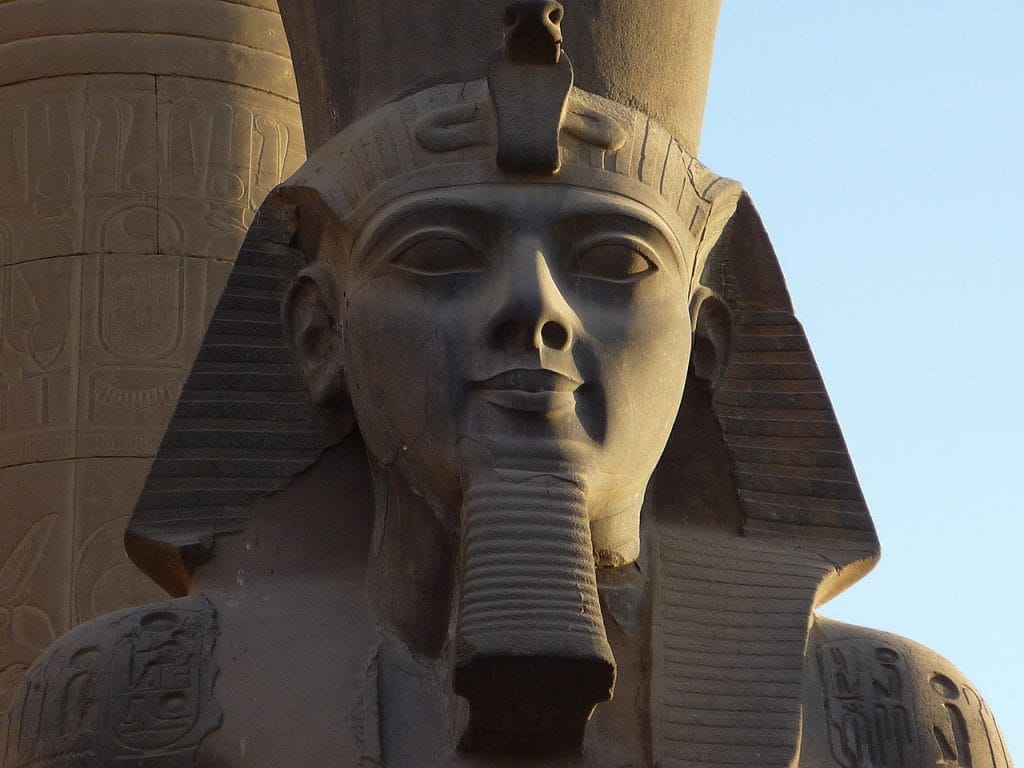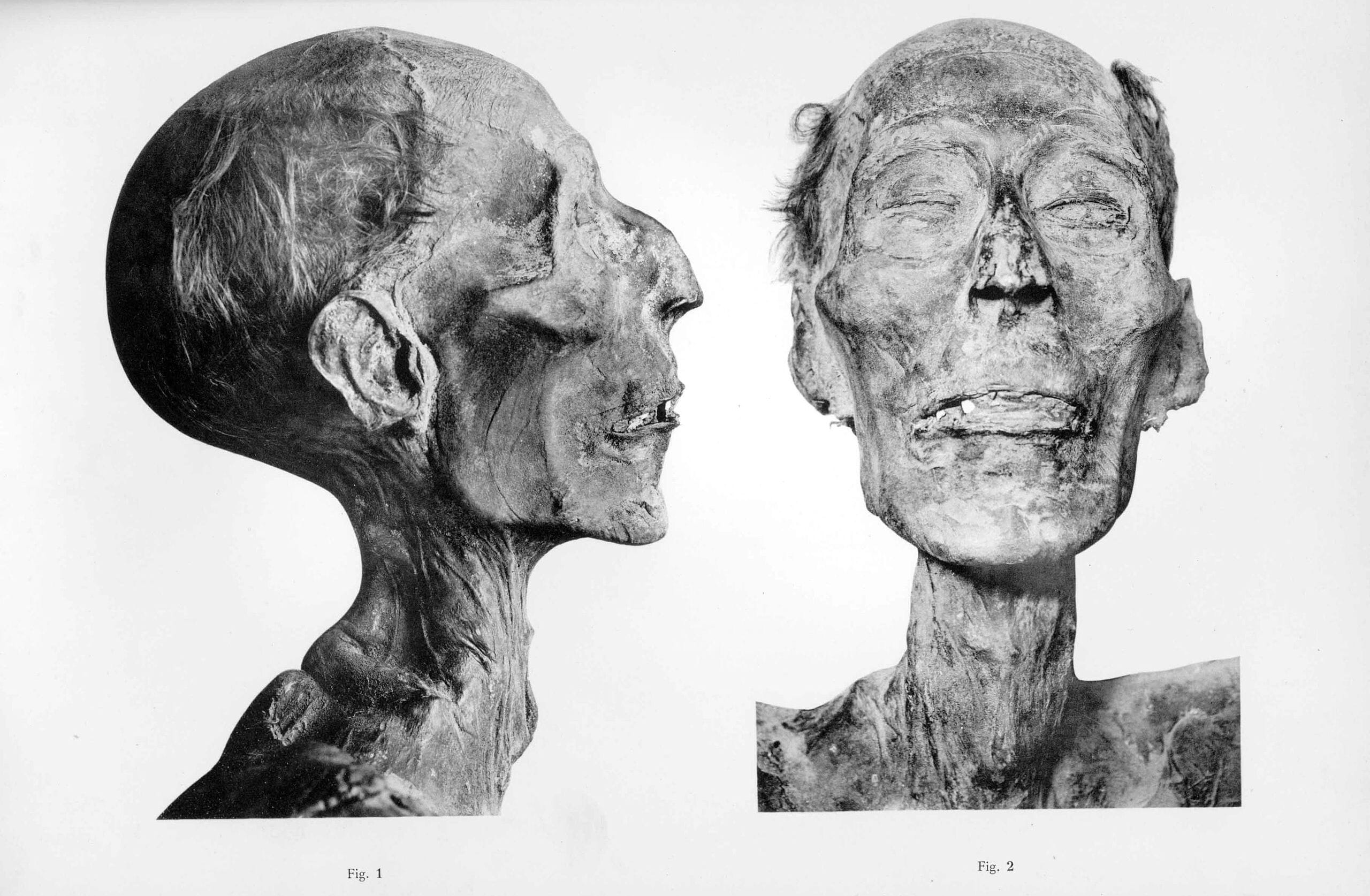There is a popular story on the Internet about how in the 1970s the mummy of Ramses II had to be taken to France and for this, a real passport was issued to the pharaoh who died 3,000 years ago. We have verified the accuracy of such publications.
Numerous public pages on VKontakte share the story about the unusual decision of the Egyptian authorities with their audience. Usually the text of the publications looks something like this: “The legendary Pharaoh Ramses II was issued a valid Egyptian passport so that his 3,000-year-old mummy could be taken to Paris for the necessary restoration.” Often such posts are accompanied by a photograph of the document. They talked about a passport for a mummy, in particular, "5 interesting facts" (4.4 million subscribers), HypeCamp (1.4 million), "5 Quick Facts" (2.5 million), HistoryPorn (1.4 million) “Do you know?!” | Interesting facts" (1.2 million) and "/Concrete mixer" (1 million). Users of other social networks also share the story: Facebook*, Twitter, LiveJournal, "Yandex.Zena" etc.
The story of a mummy receiving a passport has already attracted the attention of our colleagues from various projects. Analysis of similar posts on social networks was published by fact checkers from the American USA Today, Singapore division AFP agencies and the Kyrgyz project FactCheck.kg. Surprisingly, our colleagues, based on the results of their investigations, came to fundamentally different conclusions.
Let's start with the part of the verification in which foreign fact checkers agree. Publications on social networks are often accompanied by the same photo of Ramses II’s ID card. The document is written in English, contains a photograph of the mummy, information about the owner and information about the validity period of the card. Sometimes Internet users attach similar photographs to their posts: they contain data either in a different language or in a much smaller volume.
The document photograph that has become the most widespread actually has nothing to do with the events of the 1970s. Under the barcode in the lower left corner of the picture you can see the inscription heritagedaily.com - this is the name resource about archeology and anthropology. The image is posted in the article, published March 25, 2020 and is accompanied by the caption: “Image provided for informational purposes. The real passport is not publicly available." Speaking to AFP, HeritageDaily owner Marcus Milligan reported, who made this illustration back in 2018, and published it again in 2020. The latter is confirmed by search according to entries on VKontakte: publications about the pharaoh’s passport began to be accompanied by a photograph of the document in 2018, although about an unusual historical episode told at least since 2013.

Author: Rémih via Wikimedia Commons
Although our colleagues from different fact-checking projects agree on the history of the image, they assess the fact that it was issued differently. Thus, FactCheck.kg at the end of 2019 and USA Today at the beginning of 2021 assured their readers: the document was indeed issued, it’s just that its image was either not preserved or was inaccessible. AFP in the fall of 2020 argued the opposite: there is no evidence that the Egyptian mummy was issued a passport.
Let's look at the arguments of FactCheck.kg and USA Today. The authors of both analyzes refer to the same publication in National Geographic. It's called "Mummy Photos and Other Weird Passport Facts" and was published in October 2018. The author of the article, Karen Gardiner, writes about the story involving the mummy of Ramses II: “There are no known records of the existence of anything similar to a passport in Ancient Egypt. But in 1974, when the mummy of Ramses II (died 1213 BC) was to be sent to Paris for restoration, she was given a valid Egyptian passport with a photo of the pharaoh's face. His occupation was listed as "King (deceased)."
Gardiner, in turn, refers to an article from History.com. The article, entitled “Five Great Mummies Discoveries,” was posted on the site in the spring of 2013 and updated a month and a half before publication in National Geographic. The unnamed author of the article states, without citing third-party sources: “In 1974, archaeologists noticed that the mummy’s condition was deteriorating and sent it to Paris, where the mummy was “treated” for a fungal infection. Before the trip, Ramses II was given an Egyptian passport, in which his profession was indicated as "King (deceased)."
The lack of links to any authoritative sources is not the only problem with this publication. History.com is owned by the History Channel, formerly known as the History Channel. Over the years, the channel's content has been criticized by professional historians. In particular, History ridiculed for films about ancient aliens who caused the extinction of dinosaurs. Forbes a few years ago wrote, that the channel, in pursuit of ratings, often neglected the historical accuracy of the content for the sake of entertainment and attracting a wider audience.
Note that the article published in 2013 on History.com is mistakenly considered the first material that mentions a passport specially issued for the pharaoh. For example, at the beginning of 2010 about this mentioned in the announcement of a one-day archeology course run by the University of Manchester. Back in the 2000s, an unusual story was told on thematic resources dedicated to archeology And Ancient Egypt.
The earliest mention of the mummy passport story that we could find dates back to the early 2000s. In a 2005 scientific article, published in the journal Anthropology and Humanism, researcher Elaine Silverman of the University of Illinois cites it in the footnotes citing a Forbes publication dated August 13, 2002. At the same time, in the surviving archival copies that note does not say anything about a passport for the mummy of Ramses II, but now the article does not unavailable on the publication's website.
Unlike colleagues from Kyrgyzstan, USA Today also refers to article in The New York Times, dedicated to the ceremonial meeting of the mummy in Paris in the fall of 1976. It says nothing about the issuance of a passport to transport the remains of Ramses II from Egypt to France. Moreover, the author of the article reports that this process began to be discussed only in 1975, when Maurice Bekay examined the mummy and discovered problems with its safety, although many popular sources claim that the passport was issued back in 1974.
AFP offers to familiarize yourself with another evidence of those events - a report from the French television channel Antenne 2. Recording of the broadcast from September 26, 1976 available on YouTube. Neither the news anchor's words nor the correspondent's comments say anything about the passport issued to the mummy.
Elisabeth David of the Egyptian Antiquities Department of the Louvre reported AFP that there is no reason to believe that Egyptian authorities actually issued an identification document to the mummy. According to the expert, the confusion arose due to the report, published in 1985 by the French National Museum of Natural History. In this report, archaeologist Christiane Desroches-Noblecourt said that in order to transport a mummy it is necessary to obtain a passport from Egypt, and this word was put in quotation marks. “Of course, the French government did not literally ask the late pharaoh to present his passport. The use of this word only shows how incredibly complex the organization of the process was,” says David.

In French, the word passeport actually has There is meaning “something that allows you to move from one place to another, to be accepted in a close circle.” One of the dictionaries gives an example from the work of George Sand: “With such a passport as your voice and your violin, you could not help but be well received by my master” (“Avec un passeport comme votre voix et votre violon, vous ne pouviez manquer d’être bien accueillis par mon maître”).
Mathieu Touzel-Divina, professor of law from the University of Toulouse - 1 - Capitol, in conversation with AFP emphasized: “There is no requirement in French law for a passport for non-living people.” The expert also explained that in local law, a mummy is considered in some sense as an object of antiques - special documents are indeed required for its transportation, but calling them a passport is incorrect; they have nothing in common with an ordinary human passport.
Thus, there is no strict evidence that in the mid-1970s, Egyptian authorities issued a real passport in the name of the pharaoh to transport the mummy of Ramses II to France. This is not confirmed either by media publications of the time or by experts interviewed by our colleagues from AFP.
*Russian authorities think Meta Platforms Inc., which owns the social network Facebook, is an extremist organization; its activities on Russian territory are prohibited.
Most likely not true
- AFP Fact Check. Photo shows passport for the mummy of Ramesses II?
- Is it true that in the 19th century, steam locomotives were heated by Egyptian mummies?
- Is it true that the Egyptian pyramids at Giza were built by slaves?
If you find a spelling or grammatical error, please let us know by highlighting the error text and clicking Ctrl+Enter.






